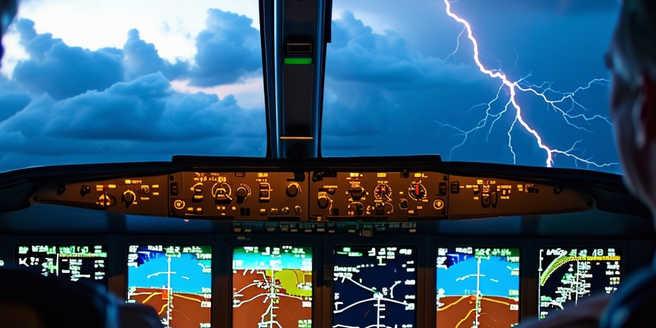
Understanding the Impact of Weather on Aviation
Weather has a profound impact on aviation due to the variability it introduces into flight operations. Pilots must evaluate weather patterns before flights to ensure safety. Conditions like thunderstorms, turbulence, and fog can delay flights, as they pose risks during takeoff, landing, and flying. Ice formation on wings can impact lift and control, while wind shear can affect the aircraft’s stability. Consequently, airlines and airports rely on accurate weather forecasts to manage schedules and ensure passenger safety. This necessitates sophisticated weather monitoring systems and constant communication between pilots and air traffic controllers to navigate the challenges posed by inclement weather. The aviation industry continuously invests in technology and training to mitigate weather-related disruptions.
Tools and Technologies for Weather Prediction
Modern aviation heavily relies on advanced tools and technologies for weather prediction to ensure the safety and efficiency of flights. Weather radars, satellites, and computer models enable accurate forecasts by tracking atmospheric changes and severe weather conditions. Doppler radar systems detect precipitation intensity and movement, providing real-time data crucial for pilots and air traffic controllers. Satellite imagery offers a broader meteorological perspective, helping in storm tracking and cloud analysis. Computational models integrate data from numerous sources to predict weather patterns. These innovations are vital in minimizing risks associated with unexpected weather phenomena. Combining these technologies, the aviation industry enhances decision-making, reduces delays, and improves flight safety by anticipating adverse weather. Continuous advancements in predictive technologies make air travel more resilient to weather disruptions.
Standard Procedures in Adverse Weather Conditions
In adverse weather conditions, standard procedures are vital to maintaining safety and minimizing disruptions. Pilots and air traffic controllers follow predefined protocols to manage challenges like thunderstorms, fog, and ice. These include rerouting flights, implementing holding patterns, and adjusting takeoff and landing approaches. Communication between pilots and controllers is critical to ensure synchronized actions. Advanced weather prediction technologies play a significant role in helping anticipate potential issues. Airlines may also adjust schedules or cancel flights preemptively to avoid hazards. Ground operations adapt by deicing aircraft and increasing runway inspections. By adhering to these procedures, the aviation industry ensures that safety remains the top priority, even when weather conditions are less than ideal.
Role of Air Traffic Controllers in Weather Events
Air traffic controllers play a critical role during weather events by ensuring safe and efficient airspace management. They monitor weather conditions closely, relaying real-time information to pilots, including updates on storms, visibility, and turbulence. Controllers are responsible for adjusting flight paths to avoid severe weather, coordinating reroutes, and managing air traffic flow. Their role becomes even more pivotal during unexpected weather changes that demand quick decision-making. Their decisions are vital in maintaining safe distances between aircraft and minimizing delays while ensuring that planes can land and take off safely. In intense weather situations, controllers collaborate with meteorologists and rely on advanced radar and communication systems to navigate challenges, underscoring their crucial involvement in aviation safety during weather disruptions.
Case Studies: Weather Incidents and Safety Lessons
Analyzing case studies on weather-related incidents in aviation provides valuable safety lessons. One notable incident is the ice storm that hit a major airport, causing flight cancellations and ground delays. The analysis highlighted the importance of timely deicing procedures and communication in preventing accidents. In another case, a plane encountered severe turbulence, emphasizing the need for accurate weather forecasting and pilot preparedness. Lessons learned from these events have led to the development of more stringent guidelines for flight operations during adverse weather conditions. These scenarios underscore the significance of training, technology, and adherence to safety protocols in mitigating risks. By studying past weather incidents, the aviation industry continues to enhance safety measures and improve response strategies for future challenges.
